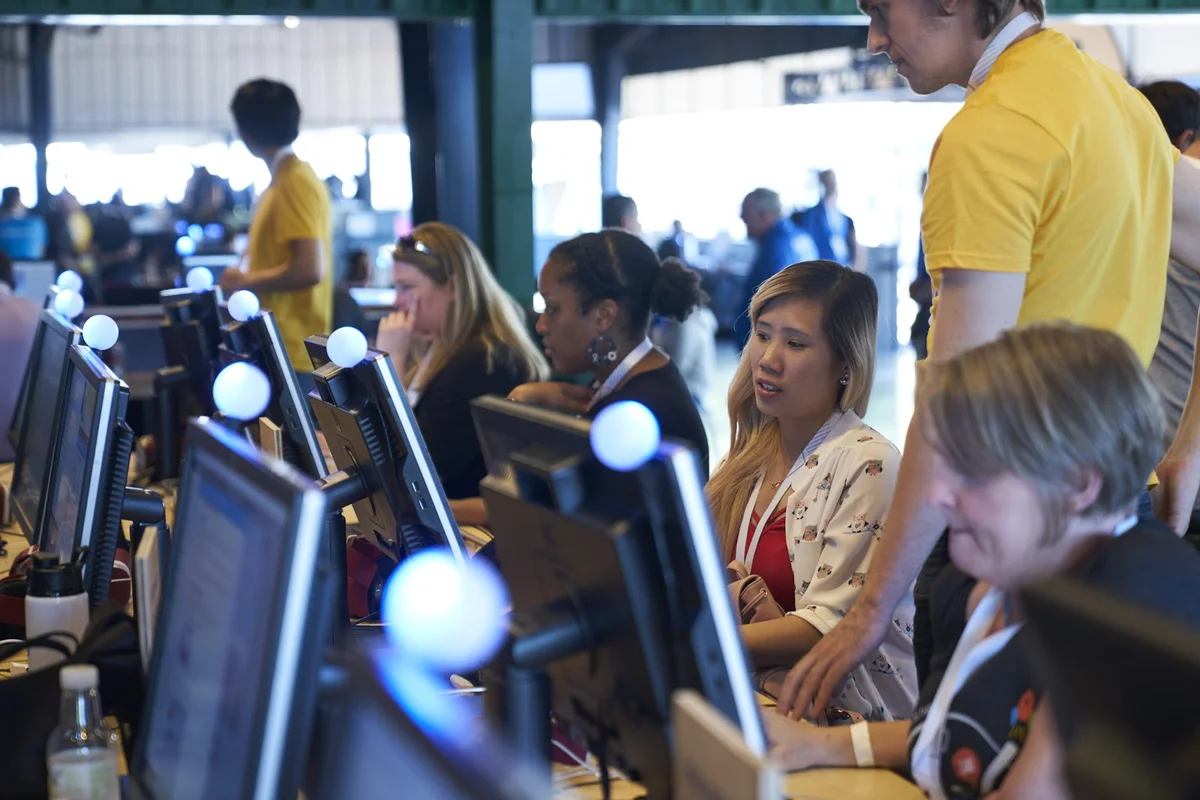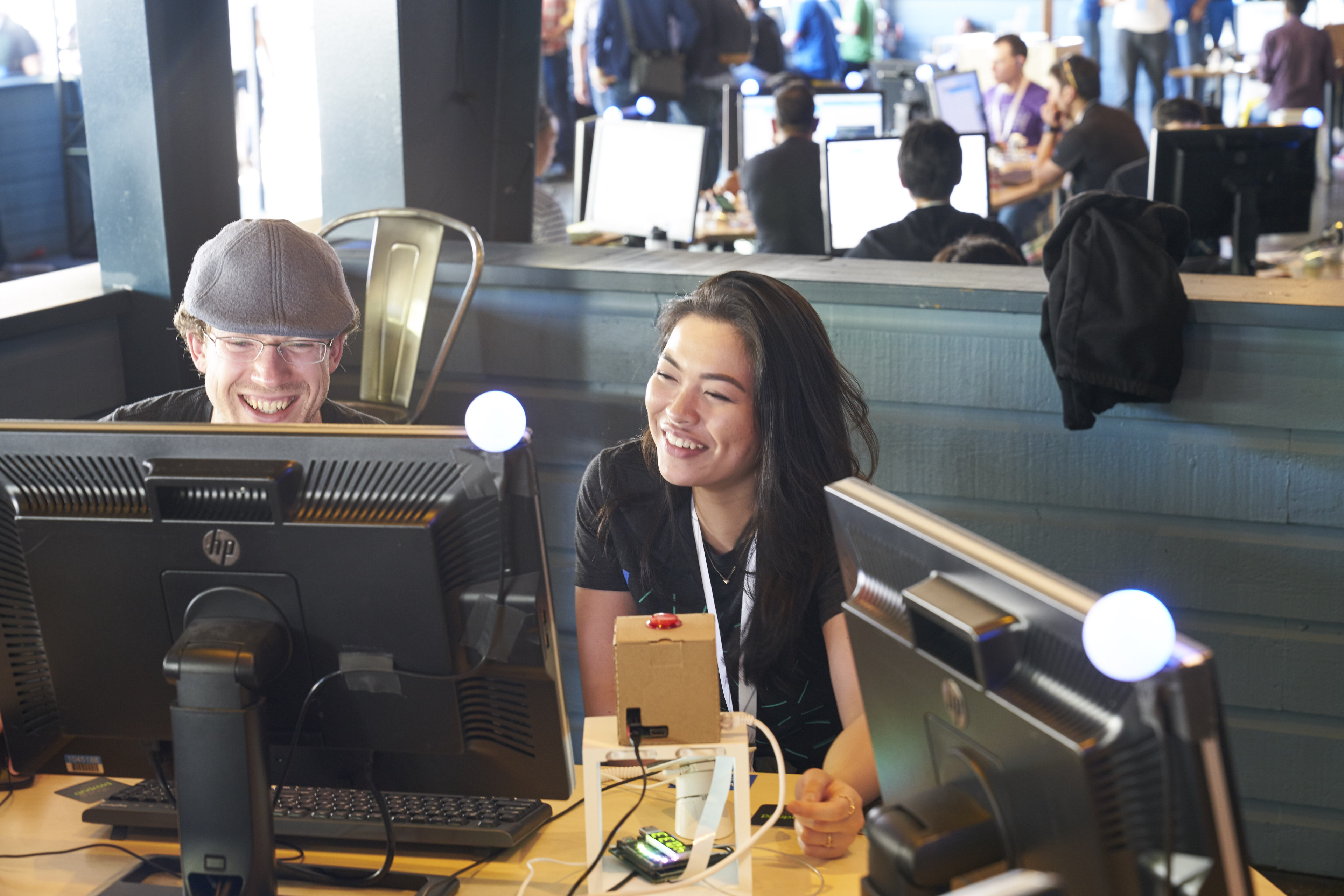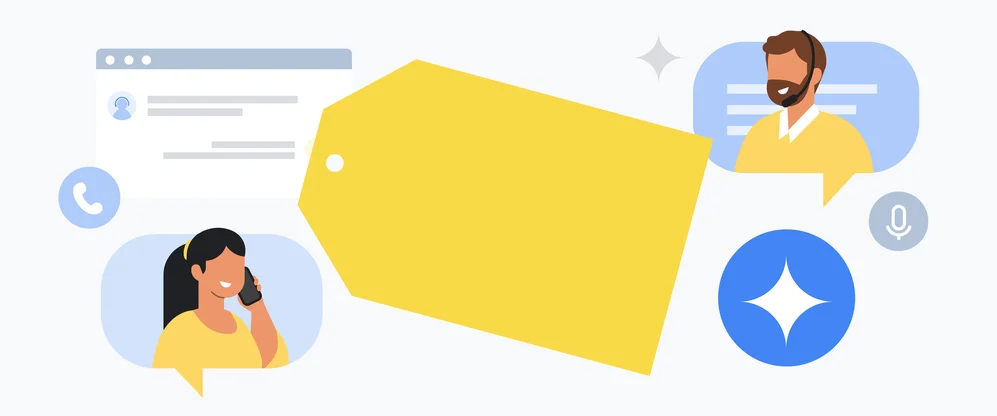Unlock your team’s creativity with hackathons: Part 2

Last week, we shared part one of our tips for setting up a successful hackathon at your workplace—including getting support from leadership, getting participants and logistics in order, and preparing your hackers in advance. Once you’ve set your teams up for a hackathon, reserved some time and space, and gotten people excited, the work of turning that energy into awesome new demos begins. Here's part two of how to run a great hackathon:
Help people share their ideas.
Our hackathons usually begin with a brainstorming workshop and then a series of rapid-fire pitch sessions. Anyone with an idea can propose it to the group, in just a couple minutes, to help find small groups that can work together for the week. We recommend keeping each presentation short, only three or four minutes each, so presentation fatigue doesn’t set in.
Helping people settle on specific project ideas, and share them succinctly, can be one of the toughest parts of the process. Great project pitches can take many forms: totally new project ideas, improvements to existing work, crossover ideas combining two or more disparate technologies or products, and more. It’s crucial that the idea, whatever kind, is expressed clearly and briefly. This lets people see if multiple ideas can be consolidated into one, and helps those participants find a team if they have no idea of their own to pursue. We’ve seen many people come to a hackathon with a pitch only to see another idea that strikes them as so cool that they would rather work on that than their own.
Hack away.
Your most important job organizing a hackathon is to preserve maximum time for teams to work on their projects. Most of your schedule should be hacking time.
We set aside various meeting rooms (small and large) for teams to use for breakout conversations, whiteboarding or working in parallel. Having some whiteboards, post-its, or easels handy helps get the creative juices flowing too. Have some food or snacks nearby, so you can fuel the brains that are hard at work.
Teams will inevitably have questions, especially as they try out new technologies for the first time. Locate and highlight experts who can participate as guides and mentors during your hackathon, to answer questions or help unblock teams as they struggle to make progress under a tight timeline.
Showcase your work.
Make sure to set aside time in your agenda to show off the great work the teams have produced, and give people a chance to interact with the projects. During this time teams pitch their ideas, everybody gets a chance to ask questions, and votes are tallied. This often results in teams realizing new ways their ideas could fit together, spawning interesting offshoot projects or new schemes. Invite your key sponsors and engineering leaders as well, so they can see the fruits of this experiment. A showcase gives them a chance to absorb what’s been done and dig into the new applications of technology that the hackathon generated.
After the hackathon.
Encourage teams to complete a retrospective after their hackathon project:
What they set out to do
What they actually got done
What went well
What could have gone better
Where did they encounter friction
What surprised them (good or bad)
What they would do differently next time
Feedback on the hackathon experience
Whether their project succeeded or not, people will have learned something, and a short bit of reflection helps solidify that newfound wisdom. We also encourage teams to follow a consistent template in sharing their completed project and in writing their retrospectives. This gives the organizers structured feedback, so you can improve the process for the next iteration and understand broadly what challenges participants faced.
After the dust has settled, get your top projects in front of your technical leadership—you might be surprised at the creativity that came out of the hackathon. And there might just be a new idea worth investing in!
Finally…
Have fun! You’ll be thrilled by the energy that results from cross-team collaboration, playing with new technology and creative problem-solving.
Thanks to Jason Heim, Sparky Rhode, and Leyton Murray for insight, guidance and feedback on this story.








